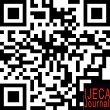Evaluation of The Implementation of The Internal Quality Assurance System Using The Cipp Evaluation Model
Abstract
Keywords
Full Text:
DOWNLOAD [PDF]References
Al-Shanawani, H. (2019). Evaluation of Self-Learning Curriculum for Kindergarten Using Stufflebeam’s CIPP Model. SAGE Open, 9(1). https://doi.org/10.1177/2158244018822380
Divayana, D. G. H., Sanjaya, D. B., Marhaeni, A. A. I. N., & Sudirtha, I. G. (2017). CIPP evaluation model based on mobile phone in evaluating the use of blended learning platforms at vocational schools in bali. Journal of Theoretical and Applied Information Technology, 95(9), 1983–1995.
Febriani, D. I. (2016). Evaluasi sistem manajemen mutu internal dalam lingkup pelayanan akademik di Universitas Lampung. Jurnal Manajemen Pendidikan, 1(2), 454–463.
Hartati, S. J. (2018). The use of CIPP model for evaluation of computational algorithm learning program. In Journal of Physics: Conference Series (Vol. 1088). https://doi.org/10.1088/1742-6596/1088/1/012081
Kurnia, F Rosana Dadan, S. (2017). Developing evaluation instrument based on CIPP models on the implementation of portfolio assessment. In AIP Conference Proceedings (Vol. 1868). https://doi.org/10.1063/1.4995187
Lee, S. (2019). Evaluation of medical humanities course in college of medicine using the context, input, process, and product evaluation model. Journal of Korean Medical Science, 34(22). https://doi.org/10.3346/jkms.2019.34.e163
Lippe, M., & Carter, P. (2018). Using the CIPP Model to Assess Nursing Education Program Quality and Merit. Teaching and Learning in Nursing, 13(1), 9–13. https://doi.org/10.1016/j.teln.2017.09.008
Maryam Modarres, Mitra Amini, M. G. M. T. (2021). Context, input, process, and product evaluation model in medical education: A systematic review. In Journal of Education and Health Promotion (Vol. 10, Issue 1). https://doi.org/10.4103/jehp.jehp_1115_20
Munthe, A. P. (2015). Pentingya Evaluasi Program Di Institusi Pendidikan: Sebuah Pengantar, Pengertian, Tujuan dan Manfaat. Scholaria : Jurnal Pendidikan Dan Kebudayaan, 5(2), 1. https://doi.org/10.24246/j.scholaria.2015.v5.i2.p1-14
Neyazi, N. (2016). Evaluation of selected faculties at Tehran University of Medical Sciences using CIPP model in students and graduates point of view. Evaluation and Program Planning, 59, 88–93. https://doi.org/10.1016/j.evalprogplan.2016.06.013
Pater, I. M., Yudana, I. M., & Natajaya, N. (2020). Studi Evaluasi Implementasi Sistem Penjaminan Mutu Internal (SPMI) dalam Rangka Mewujudkan Budaya Mutu. Jurnal Pedagogi Dan Pembelajaran, 3(1), 95. https://doi.org/10.23887/jp2.v3i1.24364
Putra, I. G. G., Marhaeni, A. A. I. N., & Dantes, N. (2015). Studi Evaluasi Pelaksanaan Kegiatan Ekapaysmainstructor Academy ( EIA ) Dalam Rangkapengembangan Diri Dan Karakter Bangsa. E- Journal Program Pascasarjana Universitas Pendidikan Ganesha, 5(1), 1–11. https://doi.org/https://doi.org/10.23887/jpepi.v5i1.1558
Ragil, Y. A., Meilani, S. M., & Akbar, Z. (2020). Evaluasi Sistem Penjaminan Mutu Internal Program Studi S1 Pendidikan Guru Pendidikan Anak Usia Dini. Jurnal Obsesi : Jurnal Pendidikan Anak Usia Dini, 4(2), 567. https://doi.org/10.31004/obsesi.v4i2.420
Ravi Chinta, Mansureh Kebritchi, J. E. (2016). International Journal of Educational Management A conceptual overview of a holistic model for quality in higher education Article information : 30(6), 989–1002. https://doi.org/http://dx.doi.org/10.1108/IJEM-09-2015-0120
Rusman. (2010). Manajemen Kurikulum, Seri Manajemen Sekolah Bermutu. Raja Grafindo Persada.
Sugiyono. (2013). Metodelogi Penelitian Kuantitatif, Kualitatif Dan R&D. Bandung:Alfabeta.
Wagiran, S. C. H. (2021). Evaluasi Perkuliahan Daring Keterampilan Menulis Selama Masa Pandemi Covid-19 Dengan Model Evaluasi CIPP. Jurnal Pendidikan Edutama (JPE), 8(2).
DOI: https://doi.org/10.31764/ijeca.v4i3.5793
Refbacks
- There are currently no refbacks.
Copyright (c) 2021 Suryadi, Fajar Erlangga

This work is licensed under a Creative Commons Attribution-ShareAlike 4.0 International License.
IJECA (International Journal of Education and Curriculum Application) already indexed:










___________________________________________________________________
| |
____________________________________________________________________
IJECA Publisher Office:








.jpg)




